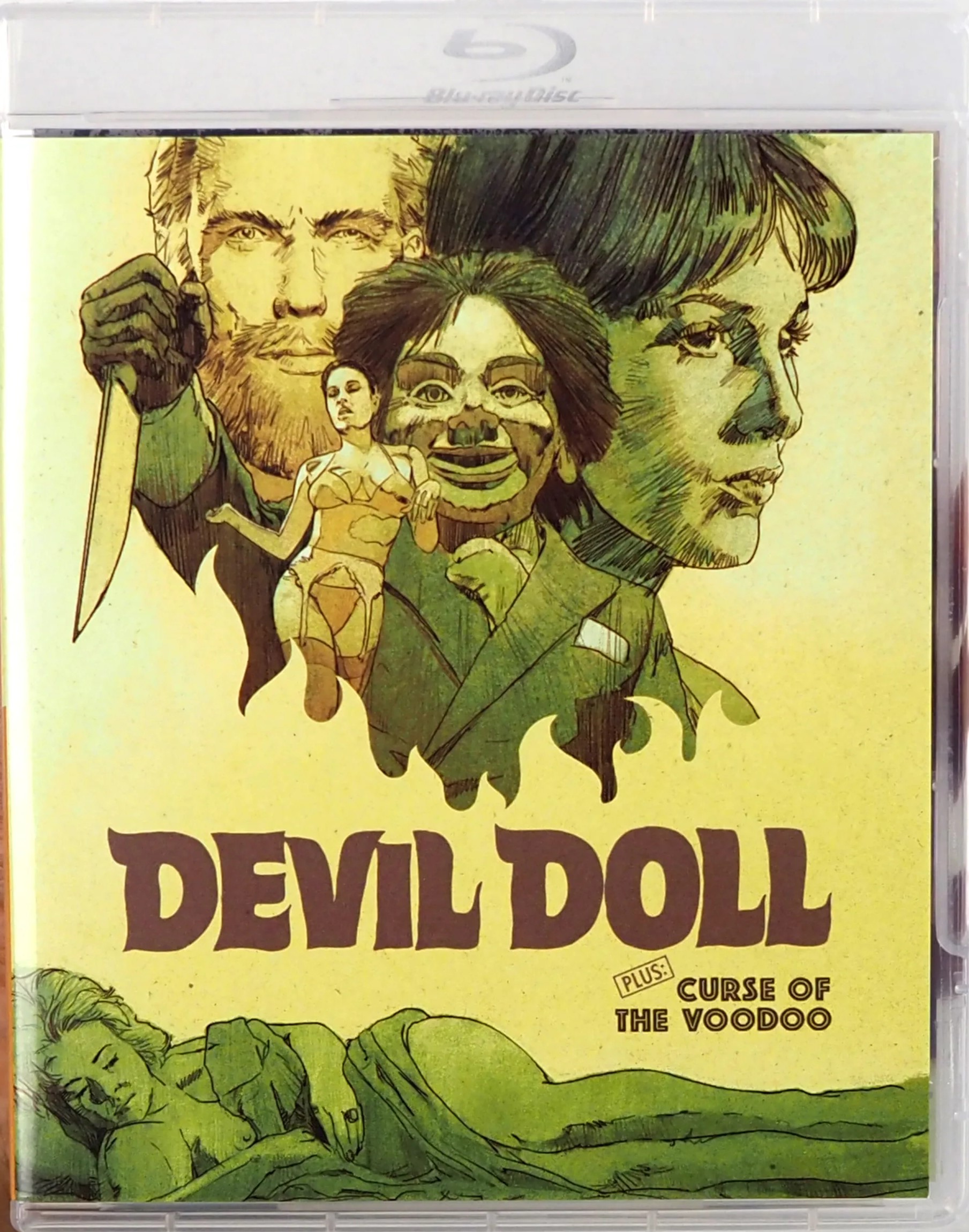The Devil Doll opens with a well-dressed man who looks exactly how I picture the Devil in human form. He is being chauffeured through the city with a creepy looking ventriloquist dummy sitting beside him. The Great Vorelli, the man with the dummy, arrives at a theater and performs a mixture of hypnotism and ventriloquism to an impressed audience. One of his tricks heavily implies that the dummy is alive. The plot involves the performer becoming obsessed with a woman in the audience (Marianne) while her boyfriend is obsessed with proving the performer to be a fraud. In the first half, the movie spends more time on Vorelli seducing Marianne and trying to get her money than it does on the mystery of the doll. The climax of the film involves a very silly looking fight scene with sped up motion. It looks goofy and unnatural and with almost no falling action, the movie suddenly ends. That probably sounds like a negative review, but the movie has a tension throughout that makes it a good watch. I do especially want to praise the actor Bryant Haliday’s performance as Vorelli. The film did not need to be heavy on special effects, when all Haliday needed to do was to give a sinister glare. Released in 1964, “The Devil Doll” is in black and white with a very crisp picture quality. 85 minutes is probably the longest run time the film could get away with, as there was not much to the premise.
There are two audio commentaries for Devil Doll. The first features film critics/writers Kim Newman and Barry Forshaw. The pair are knowledgeable about the facts regarding the filming and the careers of the principal actors. They also have a lot of enthusiasm for the subject matter. The second commentary actually features someone involved with the movie, producer Richard Gordon. Film historian Tom Weaver, is also on the track and helps keep the conversation going. Gordon reveals that he decided to become involved in the film after reading the short story on which it was based. Interestingly, the original story was a first person narration from the point of view of the boyfriend investigating Vorelli’s dummy. This one is a drier commentary but contains first-person information and impressions. One humorous story involved the actress inside the doll loved practical jokes and was motionless inside the doll costume until someone tried to pick her up. Then she would shriek and lunge at them.
Curse of the Voodoo also went by the name Curse of Simba. Bryant Haliday returns, this time playing a big game hunter that offends a local tribe that practices dark magic. Almost immediately after killing a lion, his formerly friendly assistant tries to stab him for seemingly no reason. Drinking heavily, he arrives back in England to find his wife is leaving him. He starts having nightmares and hearing a lion stalk him from the hedgerows. Two tribesmen appear, chasing him through the grounds with spears, which turns out to be another hallucination. Eventually, he decides the only way to stop the curse is to go back to Africa and confront the tribe. This one feels much slower than Devil Doll despite being of a similar length. Curse of the Voodoo has a commentary with Adrian Smith and Rod Barnett, film historians and podcasters. They seem knowledgeable and Rod has a good sense of humor.
There are a decent number of special features. First is a 20-minute interview with the Curse of the Voodoo editor, Barrie Vince. He tells the story of long hours and how the original title was going to be Lion Man. Next is a 22-minute interview with writer and film critic Kim Newman about the Curse of the Voodoo. Newman, who also appears on a commentary track, theorizes that the rise of Horror stories about white men in a remote part of the world that have to deal with supernatural fallout from offending the indigenous people’s religion is rooted in colonial guilt. He also goes through the careers of the main black actors in the film. Lastly, there is a 25-minute interview with writer and film historian Jonathan Rigby on “Devil Doll”. He points out some of the geography of London and what that implies about the characters and their status. Not being knowledgeable about the details of London in the 1960s, that information was enlightening. He proceeds to go over specific scenes and why there were effective.
The final digital special feature is an alternate two-minute scene where a woman is clothed instead of nude. Physically, the single disc double feature contains a 12-page booklet giving a history of the director, Lindsay Shonteff, a Canadian who pushed his way into English exploitation films through a combination of passion and luck. I enjoyed Devil Doll much more than Curse of the Voodoo. As far as an overall rating for this release, Curse of Voodoo was a slow-paced film that kind of plods along. Devil Doll is a much better directed film that executes a thick tension for the majority of the run time. Again, the star of the show to me was Haliday as the evil hypnotist. Combined with a multitude of commentaries, special features, and physical essay, I have to give this a thumbs up as a representation of 1960s British horror.

